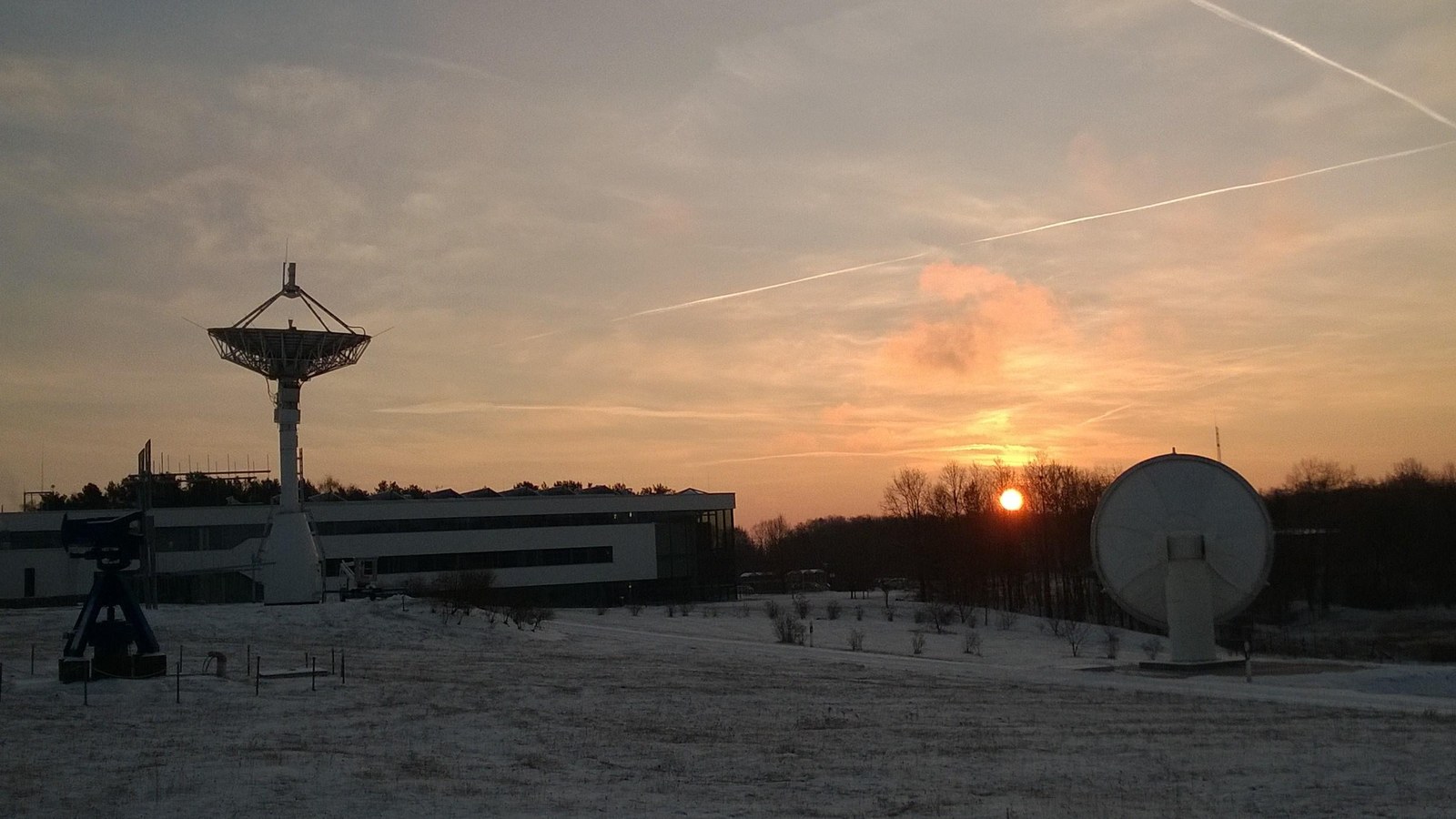DSCOVR on its way to Lagrange point L1 to ensure continuous monitoring of solar wind conditions for space weather forecast



Space weather that refers to conditions, like solar wind, in the solar system and particularly in near-Earth space has been demonstrated to impact crucial infrastructures of our modern society such as ground and space based telecommunication and navigation and power grids. So far early warnings of solar storms, e.g. of Coronal Mass Ejections (CME’s) have been provided by NASA’s Advanced Composition Explorer (ACE). Currently, five satellite ground stations in the USA (NASA, NOAA), Japan (NICT), Korea (KSWC) and Germany (DLR) belong to the international Real Time Solar Wind (RTSW) network that provides continuous information on most crucial solar wind parameters in near real time.
Considering the early launch date of ACE in 1997, the space weather community is concerned that ACE could fail at any moment. To avoid any emergency cases of missing crucial solar wind information, NOAA, NASA and US Air Force decided to replace ACE with the Deep Space Climate Observatory (DSCOVR). NOAA’s DSCOVR was successfully launched from Cape Canaveral on Wednesday, 11 February 2015 at 6:03 p.m. EST (Thursday, 12 February 2015 at 0:03 a.m. CET) atop a SpaceX Falcon 9 rocket. The spacecraft is now on its way to the Lagrange Point 1 (L1) between Sun and Earth where it will monitor the solar wind at about 1.5 million km distance from Earth. DSCOVR will replace ACE as our primary warning system for solar storms approximately 150 days after launch.
In addition to solar observations, DSCOVR will also look back at Earth to make true-color images of the full sun-facing side of Earth. In conjunction with measurements of solar energy reflected from the sunlit face of Earth, these observations will help climate scientists estimate changes of the Earth's radiation budget caused by human activities and natural phenomena.
DLR Neustrelitz has been receiving ACE for about 5 years as agreed in a Memorandum of Agreement (MoA) between NOAA and DLR. The fruitful collaboration will be continued by receiving DSCOVR signals within the international RTSW network at European daytime. A new MoA is planned to be signed between leading representatives of NOAA and DLR in the near future.
To be well prepared, technicians of the The German Remote Sensing Data Center (DFD) have already successfully tested some technical components of DSCOVR data reception in close collaboration with colleagues from the Space Weather Prediction Center (SWPC) of NOAA in Boulder. Being part of the RTSW network, DLR Neustrelitz will submit the raw data received immediately to NOAA for fast data processing. Related data products are than sent back to DLR for further use.
Scientists of the Institute of Communications and Navigation of DLR currently use ACE data to forecast ionospheric weather over Europe. Having DSCOVR data available in near real time, it is planned to further develop the forecast tools for extending and improving the ionospheric weather forecasts provided by the Ionosphere Monitoring and Prediction Center (IMPC) ) recently under development by DLR Neustrelitz. The IMPC takes advantage of the former space weather project SWACIthat has been essentially supported by the state government of Mecklenburg-Vorpommern in former years. It is foreseen that the IMPC, like SWACI, will support the space weather segment of ESA’s Space Situational Awareness (SSA) program by providing Ionospheric Weather information in near real time. This information is required for a number of applications e.g. in telecommunication, precise positioning, safety of life navigation, e.g. aviation, and remote sensing.
More detailed ideas of how DSCOVR data can be used in different fields will be discussed at the 4th National Space Weather Workshopplanned to be held at DLR Neustrelitz from 11-13 May 2015.
